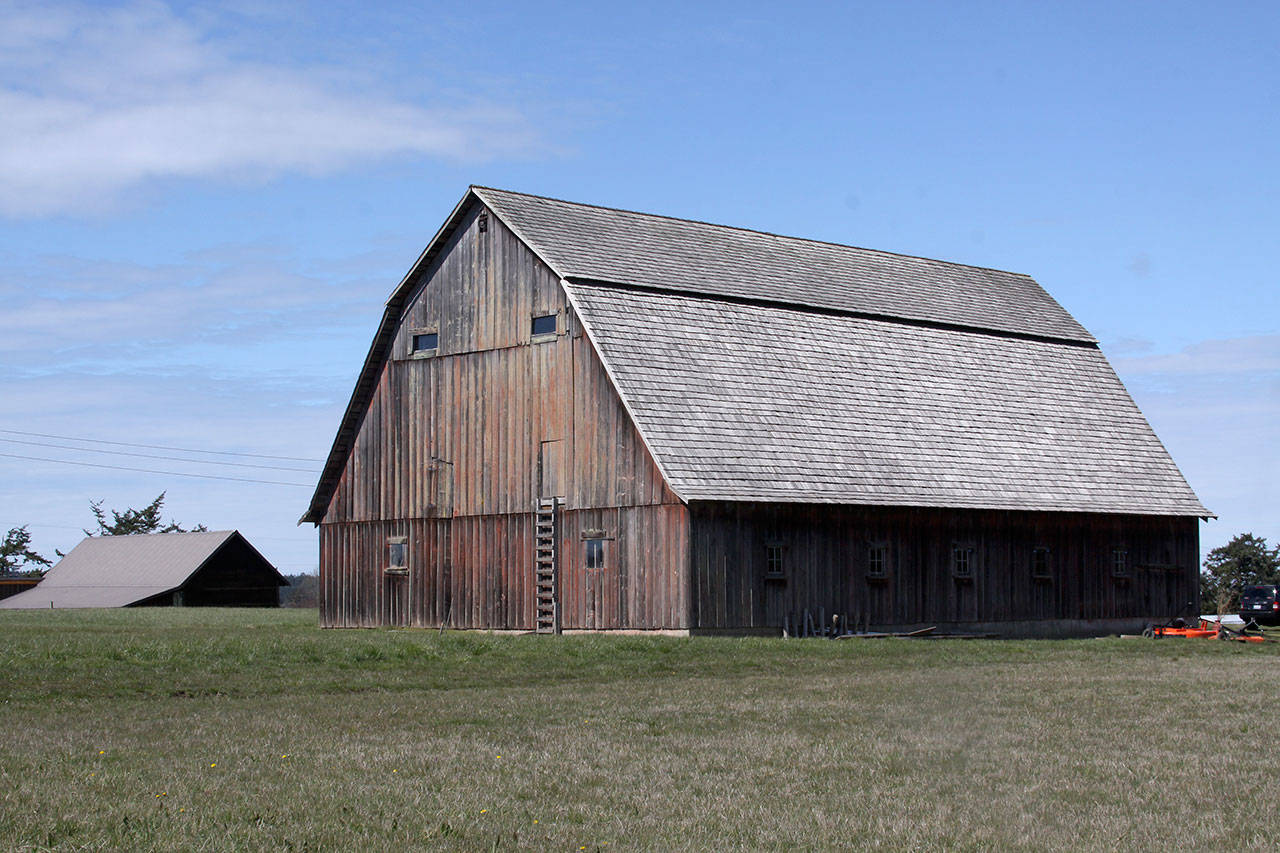Marshall English recalls the rainy spring day when curiosity led him and his wife, Judy, on a detour up a muddy road to investigate a “For Sale” sign at a farm with a cavernous old barn near Coupeville.
“We stopped on the edge of the mud and just looked at this barn with trees growing at the openings,” Marshall said. “We backed out and headed for the ferry and thought, ‘Should we put an offer in on this place?’”
Friends in Coupeville directed them to Harrison Goodall, an architectural conservator from Langley with a passion and knowledge for restoring historic buildings. The next day Goodall sent them pictures and information about the barn. It “may look awful, but the bones are good!” he told them.
The 12-acre property’s Comstock Barn, built between 1934 and 1935 by Freeman Boyer Sr., is visible across Ebey’s prairie on Central Whidbey.
Marshall and Judy laugh now at that memorable day six years ago. At the time they were getting ready to leave the country on a lengthy trip but decided to make an offer on the barn and property, hoping to return the land to agriculture and restore the barn.
Their offer was accepted. “It was the most impulsive decision we ever made,” Judy said. “Little did we know all the ramifications.”
Now, thanks to two conservation easements, one donated to the Whidbey Camano Land Trust and the other purchased by the U.S. Navy, this historically important property will be protected permanently from development no matter who may own the land in the future.
The property was a protection priority for the Land Trust. It was a “hole” in a large area of protected farmland. The property also provides a crucial link in the Land Trust’s Walking Ebey’s Trail system and is part of the first phase of trail construction, which starts this summer.
“What trail walkers will soon see is an expansive farm field that rolls down the hill with the iconic Comstock Barn as the centerpiece and Admiralty Inlet and the Olympic Mountains as the backdrop,” explained Danielle Bishop, land protection specialist. “We are so grateful to Marshall and Judy for their generosity and foresight.”
The Englishes divide their time between homes in Corvallis, Ore., and downtown Coupeville. They lease part of the farm for grass crops. Another part is designated for growing poplars and willows used by Ecolotree, a phytoremediation company that uses living plants to remove or contain contaminants in soil, surface water or ground water. The Englishes’ son also planted an experimental vineyard on the property.
The historic barn is now largely restored thanks to the Englishes’ commitment and many helping hands. Marshall remembers the first time he stepped inside the barn and looked up at the roof.
“You could stand here and look at the sky,” he said.
A new cedar shake roof replaced the original thanks to a matching financial grant from the Ebey’s Forever Fund. A rotten loft floor was replaced with help from the Englishes’ family and friends. “There are 17,200 nails in this floor,” Marshall said. “It’s also glued to the floor joists. That creates a wooden diaphragm that will maintain the shape of the barn so it won’t rotate in big winds.”
A friend, Ron Selig of Langley, built a new staircase to replace a rickety ladder to the barn’s second floor. That makes it easier to climb up and enjoy the incredible view.
“Open land is good for the soul,” Judy said.
Whidbey Camano Land Trust actively involves the community in protecting, restoring, and appreciating the important natural habitats and resource lands that support the diversity of life on our islands and in the waters of Puget Sound.
• For information, call 360-222.3310.


